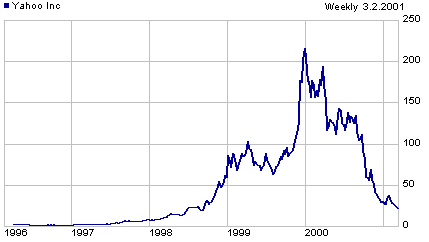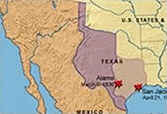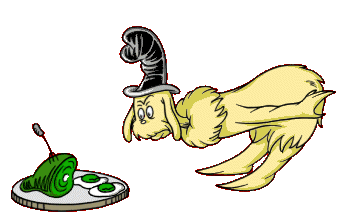1939
Oscar Vladislas Milosz, poète Franco-Lituanien (ou
Biélorusse) des plus originaux. ^top^
Le surgissement à notre époque
de ce poète lituanien de langue française, qui fait songer à la fois
à Nerval, à Verlaine et à Claudel, ressemble à celui d’une comète
: venu d’ailleurs, vivant à l’écart du monde et des modes littéraires,
on dirait un romantique égaré entre la fin du symbolisme et les débuts
du surréalisme. Nourri de Dante, de Goethe, de Byron et de Poe, féru
d’illuminisme, d’alchimie, de Kabbale, ses vrais héros sont Faust
et Salomon ; cette constellation de noms suffit à le placer hors du
temps, surtout hors de notre temps. Mais sa démarche, dont l’unité
réside dans le " pèlerinage aux sources ", lui permet d’être un contemporain
de toutes les époques : il a cherché passionnément, à travers tous
les livres des sages qui passent pour fous, à travers tous les mythes
comme à travers tous les langages, le secret de la souffrance et de
la noblesse de l’homme ; il a même rêvé d’être un nouvel Adam. Oscar
Vladislas de Lubicz-Milosz naquit à Czereïa, en Lituanie (aujourd'hui
en Biélorussie) et grandit dans le château familial jusqu'en 1889.
Il fut initié précocement au français par sa gouvernante, et garda
toute sa vie cette double appartenance à la Lituanie, que les bouleversements
de l'Histoire rendirent de plus en plus inaccessible, et à la France
(il adopta la nationalité française en 1931).
Cette éternelle mélancolie de l'exilé nostalgique lui inspira d'abord
des poèmes décadentistes (" Poème des décadences ", 1899 ; " les Sept
Solitudes ", 1906), puis " l'Amoureuse Initiation " (1910), roman
historique situé dans la Venise du XVIIIème siècle, où il fait un
bilan amer de ses déceptions. Ses premières pièces (" Miguel Mañara
", 1912 ; " Méphiboseth ", 1913 ; " Saül de Tarse ", 1914, publié
en 1971) annoncent le tour mystique, voire occultiste, que va prendre
son œuvre à partir de la nuit du 14 décembre 1914, où il connaît une
illumination dont il essaiera de rendre compte dans " l'Épître à Storge
" (1917). Il se consacra dès lors à des recherches ésotériques, aidé
en cela par ses vastes connaissances des langues et par son appartenance
à plusieurs cultures. On retrouve la trace de ses préoccupations métaphysiques
dans le lyrisme de ses recueils poétiques " Nihumim " (1915), " Adramandoni
" (1918) et la " Confession de Lemuel " (1922), mais elles font surtout
l'objet d'essais et de traités, plus poétiques que scientifiques,
où se manifestent parfois de remarquables intuitions : " les Arcanes
" (1927), " l'Apocalypse de saint Jean déchiffrée " (1933), " la Clef
de l'Apocalypse " (1938). |
1939 Howard
Carter, English archeologist born on 09 May 1874, who found
the entrance to the tomb of Tutankhamun on 05 November 1922, first saw the
inside on 26 November 1922, broke seals on 17 February 1923, opened the
sarcophagus on 03 February 1926, opened the coffins on 10 October 1926,
first examined the mummy on 11 November 1926, continued investigating at
the site until 1929, and co-wrote (with Arthur C. Mace) the three-volume
The Tomb of Tutankh.Amen (1923-1933)
1938 Gabriele
d'Annunzio, escritor y político italiano.
1932 Sor
Ángela de la Cruz, escritora española.
1930
David Herbert Lawrence, ^top^
D. H. Lawrence was an English short-story
writer, poet, essayist, and one of the most important and controversial
20th-century English novelists. Lawrence was born on 11 September
1885. In May 1912 he left England with the wife of one of his former
professor, then returned to England and married her in July 1914.
This kind of relationship would form the theme of much of his fiction,
some of which would be banned as obscene.
— The son of
a Nottingham coal miner, Lawrence was a sickly child, devoted to his
refined but domineering mother, who insisted upon his education. He
graduated from the teacher-training course at University College,
Nottingham, in 1905 and became a schoolmaster in a London suburb.
In 1909 some of his poems were published in The English Review,
edited by Ford
Madox, who was also instrumental in the publication of Lawrence's
first novel, The White Peacock (1911).
Lawrence eloped to the Continent in 1912 with Frieda von Richthofen
Weekley, a German noblewoman who was the wife of a Nottingham professor;
they were married in 1914. During World War I the couple was forced
to remain in England; Lawrence's outspoken opposition to the war and
Frieda's German birth aroused suspicion that they were spies. In 1919
they left England, returning only for brief visits. Their nomadic
existence was spent variously in Ceylon (now Sri Lanka), Australia,
the United States (New Mexico), and Mexico. Lawrence died at the age
of 45 of tuberculosis, a disease with which he had struggled for years.
— Lawrence believed that industrialized Western culture
was dehumanizing because it emphasized intellectual attributes to
the exclusion of natural or physical instincts. He thought, however,
that this culture was in decline and that humanity would soon evolve
into a new awareness of itself as being a part of nature. One aspect
of this blood consciousness would be an acceptance of the need for
sexual fulfillment. His three great novels, Sons and Lovers
(1913), The Rainbow (1915), and Women in Love (1921),
concern the consequences of trying to deny humanity's union with nature.
After World War I, Lawrence
began to believe that society needed to be reorganized under one superhuman
leader. He kept trying to get his friends to join him in founding
a utopian society in some exotic locale. He called that society Rananim,
from a word comes in a Hebrew song which he heard sung by his Jewish
friend, Samuel Koteliansky. The novels containing this theme —
Aaron's Rod (1922), Kangaroo (1923), and The
Plumed Serpent (1926) — are all considered failures. Lawrence's
most controversial novel is Lady Chatterley's Lover (1928),
the story of an English noblewoman who finds love and sexual fulfillment
with her husband's gamekeeper. Because their lovemaking is described
in intimate detail (for the 1920s), the novel caused a sensation and
was banned in England and the United States until 1959.
All of Lawrence's novels are written in a lyrical, sensuous, often
rhapsodic prose style. He had an extraordinary ability to convey a
sense of specific time and place, and his writings often reflected
his complex personality. Lawrence's works include volumes of stories,
poems, and essays. He also wrote a number of plays, travel books such
as Etruscan Places (1932), and volumes of literary criticism,
notably Studies in Classic American Literature (1916).
D. H. Lawrence is less know as a painter,
some of whose artwork was found objectionable for similar reasons
as some of his writing.
— LAWRENCE ONLINE: — Aaron's
Rod — Amores — Lady
Chatterley's Lover _ Lady
Chatterley's Lover (1928) —
New Poems — The
Rainbow — The
Rainbow — Rex
(original magazine version) — Sons and
Lovers _ Sons
and Lovers (1913) — Studies in
Classic American Literature (1923) — Touch
and Go: A Play in Three Acts — Women
in Love _ Women
in Love (1920) — one of the authors included in Some
Imagist Poets: An Anthology
— Artwork: Holy
Family — Presurrection
— Boccacio
Story
— Georgia O'Keeffe's The
Lawrence Tree (I have no idea what it means) |
1923 Rui Barbosa, uno de los fundadores de la República
de Brasil y autor de su Constitución.
1921 Thomae,
mathematician.
1918
Hans Ledwinka, 89, engineer who created the Tatra car,
in Munich, Germany. ^top^
Early in his career, Ledwinka took over engineering for the Nesseldorf
Wagenbau of Austria-Hungary when the founder of the company, Hugo
von Roslerstamm, decided the company should enter racing. Under Ledwinka’s
leadership, the Rennzweier and the Type A racers were produced. The
cars demonstrated modest racing success and wide-scale production
of the Type S began in 1909. Nesseldorf Wagenbau continued to grow
until 1914, when, coinciding with the outbreak of WWI, it shifted
to railroad production. On October 28, 1918, two weeks before the
end of the war on the Western Front, the Moravian town of Nesseldorf
of Austria-Hungary became the city of Koprivnicka in the newly created
country of Czechoslovakia. Just after the war, Hans Ledwinka began
construction of a new automobile to be marketed under the marquee
Tatra, a division of the newly named Koprivnicka Wagenbau. The Tatra
High Mountains are among the highest mountains in the Carpathian Mountain
Range, the legendary home of Bram Stoker’s Dracula. Ledwinka settled
on the name Tatra in 1919 when an experimental model of his car with
four-wheel brakes passed a sleigh on an icy mountain road, prompting
the sleigh riders to exclaim, "This is a car for the Tatras." In 1923,
the first official Tatra automobile, the Tatra T11, was completed,
and Ledwinka’s hope for an affordable "people’s car" was realized.
The reliable, rugged T11, like Ford’s Model T, gave many Czechoslovakians
their first opportunity to own an automobile. In 1934, Tatra achieved
automotive notoriety with the introduction of the Tatra 77, the world’s
first aerodynamically styled automobile powered by a rear-mounted
air-cooled engine. |
1913 George McDonald, Black, lynched in Brooks County,
Georgia, accused of having taken a shot at a White man.
1909
Henriette Ronner-Knip, Dutch artist born on 31 May 1821.
1909
John (or Joseph) Fowler, lynched in Early County, Georgia, accused
of assaulting a White.
1895 Berthe Marie-Pauline Morisot,
Mme. Eugène Manet, French Impressionist
painter born on 14 January 1841. — MORE
ON MORISOT AT ART “4” MARCH
— her
portrait by brother-in-law Edouard
Manet. — LINKS
— Au
Bois de Boulogne — Paris
vu du Trocadéro — Cache-cache
— Nice
Little Girl (Nice: the city) — La
lecture
1885 Serret,
mathematician.
1872 Henri Bataille, poeta francés.
1871 Antoine Léon Morel-Fatio, French
artist born on 17 January 1810.
1869 Jan
van Ravensway (or Ravenszwaai), Dutch artist born on 29 November
1789.
1855 Nicholas I, Tsar of Russia. His reign
of autocracy and militarism was ended by defeat in the Crimean war.
1847 Louis Ducis, French artist born on 14 July 1775.
1814 reverend Matthey William Peters, British artist born
in 1741.
1812 John Raphael Smith, English artist
born in 1752. — LINKS
— A
Visit to Grandmother — A
Wife (stipple engraving in color) — Shepherdess
— Mr. Bannister,
Jr. and Mr. Parsons
1792 Carl Gustav Pilo,
Swedish artist born on 19 March 1711 or 1712.— LINKS
— Kirjailija
Adam Lenkiewitz
1783 Francisco Salzillo, escultor
español.
1751 John Smibert, Scottish US painter specialized
in Portraits,
born on 02 April 1688. — MORE
ON SMIBERT AT ART “4” MARCH
— LINKS
— John
Nelson |
 On a March 02:
On a March 02:
 1836 Texas
1836 Texas
 1904
1904
 He was the author of Land Before Time, The Cat in the Hat, The Cat in
the Hat Comes Back, Dr. Seuss's ABC, Fox in Socks, Green
Eggs and Ham, Hop on Pop, I Am NOT Going to Get Up
Today!, I Can Read with My Eyes Shut!, I Wish That I Had
Duck Feet, Oh Say Can You Say?, Oh, the Thinks You Can Think!, One Fish
Two Fish Red Fish Blue Fish, Ten Apples Up on Top!, And to Think That I Saw
It on Mulberry Street, Bartholomew and the Oobleck, The Butter Battle Book,
Did I Ever Tell You How Lucky You Are?, Dr. Seuss's Sleep Book, The
500 Hats of Bartholomew Cubbins, Happy Birthday to You, Hooray for Diffendoofer
Day!, Horton Hatches the Egg, Horton Hears a Who!, How the Grinch Stole
Christmas!, Hunches in Bunches, I Can Lick 30 Tigers Today! and Other
Stories, I Had Trouble in Getting to Solla Sollew, If I Ran the Circus,
If I Ran the Zoo, The King's Stilts, The Lorax, McElligot's Pool, My Book
About Me, My Many Colored Days, Oh, the Places You'll Go!, On Beyond Zebra!,
Scrambled Eggs Super!, The Sneetches and Other Stories, Thidwick the BigHearted
Moose, Yertle the Turtle and Other Stories, You're Only Old Once!, Great
Day for Up I, Myself Marvin K. Mooney Will You Please Go Now!, Mr. Brown
Can Moo! Can You?, The Shape of Me and Other Stuff, There's a Wocket in
My Pocket, Did I Ever Tell You How High You Can Count?: Learn About Counting
Beyond 100 .
He was the author of Land Before Time, The Cat in the Hat, The Cat in
the Hat Comes Back, Dr. Seuss's ABC, Fox in Socks, Green
Eggs and Ham, Hop on Pop, I Am NOT Going to Get Up
Today!, I Can Read with My Eyes Shut!, I Wish That I Had
Duck Feet, Oh Say Can You Say?, Oh, the Thinks You Can Think!, One Fish
Two Fish Red Fish Blue Fish, Ten Apples Up on Top!, And to Think That I Saw
It on Mulberry Street, Bartholomew and the Oobleck, The Butter Battle Book,
Did I Ever Tell You How Lucky You Are?, Dr. Seuss's Sleep Book, The
500 Hats of Bartholomew Cubbins, Happy Birthday to You, Hooray for Diffendoofer
Day!, Horton Hatches the Egg, Horton Hears a Who!, How the Grinch Stole
Christmas!, Hunches in Bunches, I Can Lick 30 Tigers Today! and Other
Stories, I Had Trouble in Getting to Solla Sollew, If I Ran the Circus,
If I Ran the Zoo, The King's Stilts, The Lorax, McElligot's Pool, My Book
About Me, My Many Colored Days, Oh, the Places You'll Go!, On Beyond Zebra!,
Scrambled Eggs Super!, The Sneetches and Other Stories, Thidwick the BigHearted
Moose, Yertle the Turtle and Other Stories, You're Only Old Once!, Great
Day for Up I, Myself Marvin K. Mooney Will You Please Go Now!, Mr. Brown
Can Moo! Can You?, The Shape of Me and Other Stuff, There's a Wocket in
My Pocket, Did I Ever Tell You How High You Can Count?: Learn About Counting
Beyond 100 .